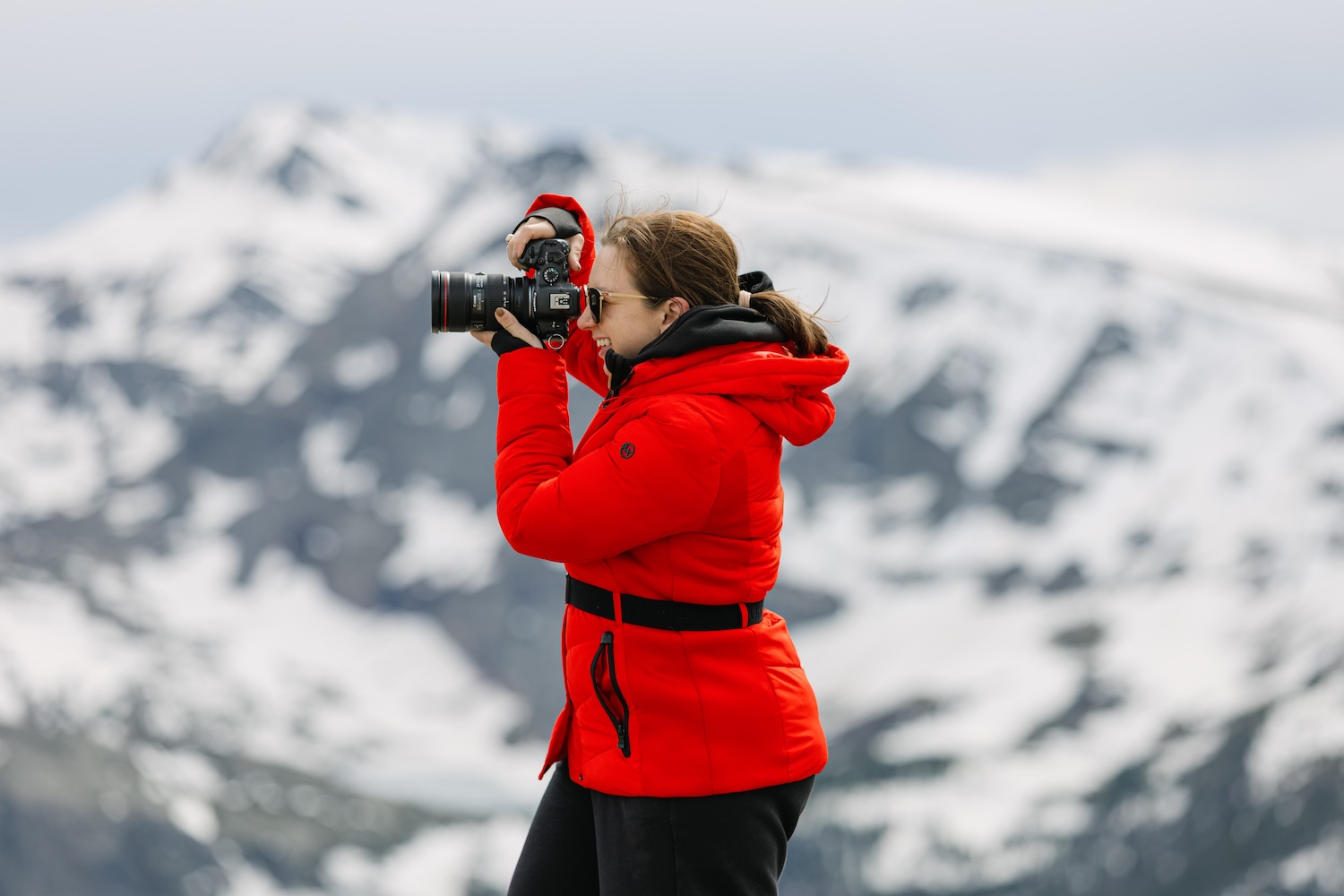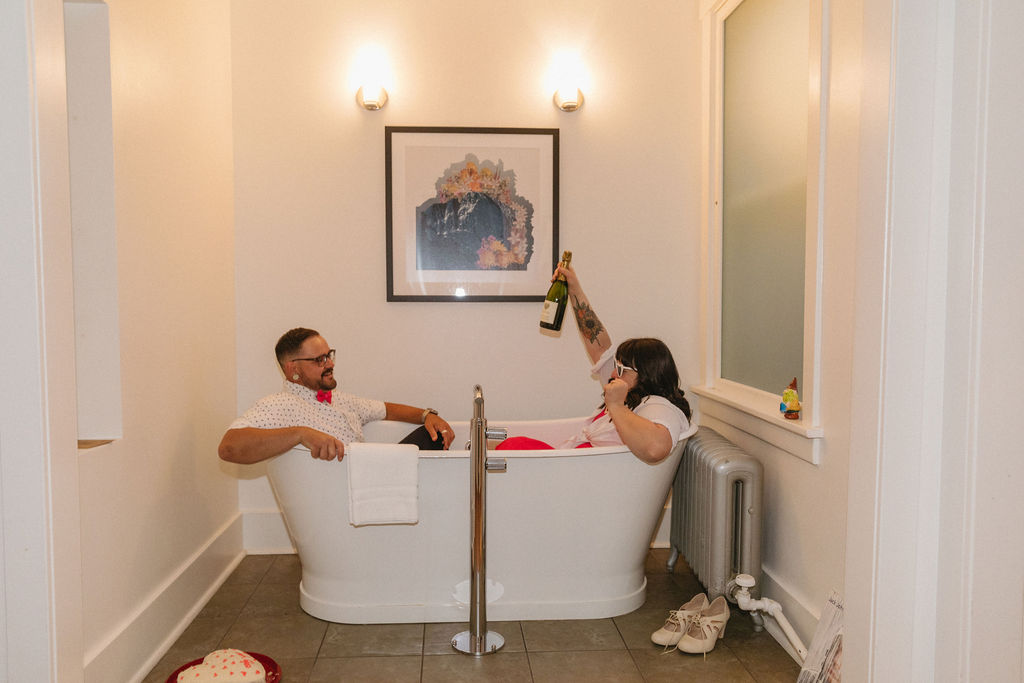If you’ve ever heard someone say that elopements are “so much easier than weddings” and thought, “Yes! That’s exactly what I want to shoot!” then this blog post is for you—to learn how to become an elopement photographer. You should also know, I’m based in Colorado, but this advice can be applied to any location!
Spoiler alert: While elopements are absolutely incredible to photograph and I will never stop shooting them, they’re not necessarily easier than weddings. They’re just different. And honestly? In some ways, they require even more research, planning, and expertise than traditional venue weddings.
Let me paint you a picture of my absolute nightmare scenario (and the whole reason I’m so passionate about this topic): You’re in the middle of capturing your couple’s vows during their dream elopement in one of the most breathtaking locations you’ve ever photographed. The light is perfect, the moment is magical, and suddenly a ranger walks up and asks for your permit. And you don’t have one.
At this point, you’re literally at the mercy of the ranger to decide how the rest of the day goes. Your client’s once-in-a-lifetime wedding day hangs in the balance, and there’s absolutely nothing you can do about it.
This exact fear is what motivates me to be so thorough with my elopement prep. I’m a huge rule follower and researcher by nature (shout out to grad school for making me love research!), and that part of me has really driven me to dig deep into every single job I take on.
Here’s what I want you to know: The myth that you can just elope wherever you want, however you want, is exactly that—a myth.
Yes, there’s incredible freedom in eloping. But it’s not a free pass to do absolutely whatever you want, wherever you want. And as a professional photographer and usually the sole vendor present for elopements, a lot of the responsibility for knowing the rules falls on us.
By the end of this post, you’ll have a complete list of the 8 most important factors to consider before you shoot your first elopement (or to make sure you’re covering everything if you’re already shooting them!).
1. How to Get Elopement Photography Permits: What Every Colorado Elopement Photographer Needs to Know
Let’s start with the big one: permits. Because honestly, this is where I see the most confusion and where things can go really wrong, really fast.
The biggest myth about elopements? That you can just show up anywhere and shoot.
Here’s the reality check: permit requirements are all over the map. Some locations only require a permit if the wedding is over 75 people. Others require a permit even if it’s just your couple and you as the photographer. And the only way to know the difference? A whole lot of research and probably some phone calls.
You can read all about Colorado photography permits for the most popular elopement and photoshoot locations in my linked guide.
What You Need to Know About Permits:
- Start researching the moment your couple inquires about a location to make sure it’s even legal to have a ceremony there
- Confirm who’s getting the permit – sometimes it’s the couple’s responsibility, sometimes it’s yours as the photographer
- You’ll need your certificate of insurance – pretty much every permit application requires you to upload this
- Plan for processing time – I’ve seen permits get approved instantly, and I’ve seen them take months
- Budget accordingly – I’ve seen permit costs range from $25 to $350+ depending on the location and permit type
Pro tip: Always confirm with your couple if they already have their ceremony permit, if they’re working on getting it, or if they even know they need one. In some cases, your photography permit actually doubles as your ceremony permit, which is helpful!
And here’s something that might surprise you: this applies to photo shoots too, not just ceremonies. If your couple just wants photos in their wedding attire (maybe they’re already married or they’re on their honeymoon), you might still need a permit just for the photo shoot.
2. How to Define Elopement Photography Services for Your Business
Okay, let’s talk about how much the definition of “elopement” has changed. For example, I get inquiries for “elopements” with 30+ people. That’s not an elopement, friends—that’s a micro wedding!
The definition of elopement now really just revolves around a wedding in the mountains (or nature) that’s not at an official venue. And while there’s nothing wrong with that, you need to decide for your business what counts as an elopement versus a micro wedding versus a regular wedding.
My definition: Weddings with 20 or fewer people qualify as elopements in my business. Beyond that, I move into custom quotes for micro weddings.
This number feels right for me and my business model, but you can absolutely decide what works for you. The important thing is being clear about your definition on your website, in your pricing guide, and when you get inquiries.
Logistics to Consider with Group Size for Elopements:
- How much parking is available at the location?
- Does every car need its own entrance permit?
- Are there restrooms at the location?
- Can you bring chairs for people who need to sit?
- How far does everyone have to walk to get to the ceremony spot?
- Make sure the location actually allows your group size (and check if vendor count is separate from guest count!)
3. How to Photograph Elopements in Nature: Environmental Rules for Colorado Elopement Photography
This is huge, and it’s something I think a lot of people don’t fully consider: when you’re shooting an elopement in nature, the environment literally is your venue. Which means you need to know how to work with it and respect it.
Enter: Leave No Trace principles. These are basically the guidelines for how to protect the environment and leave no trace that you were there. And in my opinion, you’re responsible for educating your clients about these principles too.
The 7 Leave No Trace Principles:
- Plan ahead and prepare
- Travel and camp on durable surfaces
- Dispose of waste properly
- Leave what you find
- Minimize campfire impacts
- Respect wildlife
- Be considerate of others
Common Environmental Restrictions for Elopements:
- No structures: ceremony arches, chairs, etc.
- No real florals in certain locations
- No glass or alcohol
- No confetti (even the biodegradable stuff)
- You have to stay on designated trails
- You can’t disturb wildlife or vegetation
Your job as an elopement photographer: Make sure you and your couple know these rules before you show up. Because “I didn’t know” isn’t going to fly with a ranger.
Practical Environmental Stuff to Research:
- Parking – is there enough? Is it open year-round?
- Restrooms – are there any?
- Accessibility – how far is the walk? What kind of shoes should everyone wear?
- Seasonal conditions – is the location even accessible during your shoot date?
- Altitude – do you and your clients need time to adjust?
- Weather patterns – afternoon storms? Surprise snow?
- Required gear – 4WD vehicles, micro spikes, hiking poles, snow shoes, sunscreen, etc.?
4. How to Handle Wildlife and Crowds When Photographing Colorado Elopements
Here’s something that might not occur to you if you’ve only shot at private venues: during an elopement, you’re sharing public land with everyone else who wants to visit that day. Unless you’re in a very secluded location at a not-popular time, there are probably going to be other people around. In some cases, like in Rocky Mountain National Park, you can reserve a wedding ceremony site for a specific time slot to guarantee use of that exact location. Plus, in RMNP, you have to get married at one of the designated sites (ceremonies aren’t allowed elsewhere). If you’re interested, you can read more on how to elope in Rocky Mountain National Park here.
Most people are super respectful when they see a wedding happening, but here’s the thing: they have just as much right to be there as you do. And some permits explicitly say you’re not allowed to ask other visitors to move for your photos.
Plan for: Photoshop work, strategic positioning, or just embracing the fact that you might have some hikers in the background of your elopement photos.
And Then There’s Wildlife…
Depending on where you’re shooting, you might need to share the space with bears, moose, mountain lions, elk, or other animals. It’s important to research what wildlife lives in the area and prepare accordingly.
Wildlife prep includes:
- Knowing the rules for carrying bear spray
- Understanding safe food storage and trash disposal
- Having a plan for what to do if you encounter different animals
- Checking if there are any food restrictions (I’ve shot at locations that don’t allow picnics because of wildlife!)
5. How to Plan for Weather When Photographing Mountain Elopements in Colorado
The truth: Nature doesn’t follow your schedule.
Weather conditions can change incredibly quickly, especially in the mountains. That sunny forecast can turn into an afternoon thunderstorm faster than you can say “I do.” And sometimes road conditions change overnight—one day the trailhead is perfectly accessible, the next day it’s buried under a foot of surprise snow.
This is why backup plans aren’t optional. I always recommend having at least one backup location, if not multiple options. And these backups should ideally be less affected by weather changes.
Backup Plan Essentials:
- Alternative outdoor locations
- Indoor options (with proper permissions!)
- Different ceremony sites researched in advance
- Contact info for local ranger districts
- Flexible timeline that can adapt to conditions
Real story time: I had a couple whose Vrbo wedding venue had a pipe burst less than a month before their elopement. We had to completely pivot, research ceremony permits, and create an entirely new plan. The day ended up being even more beautiful than originally planned, but only because we had the knowledge and resources to adapt quickly.
6. Vendor Requirements Every Colorado Elopement Photographer Should Know
Here’s something that might catch you off guard: some locations have really specific rules about professional vendors.
For example, certain locations only require permits if you have a wedding planner involved. Others require specific vendors once your group size hits a certain number. And sometimes you only need a photography permit if you’re the only vendor there.
The key: Understanding your role in the permit process as an elopement photographer and communicating any requirements clearly with your couple.
7. How to Handle Lodging Logistics for Colorado Elopement Photography
If your couple is staying at an Airbnb or Vrbo, I always recommend (and require) that they get permission to have their ceremony there—even if they’re just getting ready at the lodging and going somewhere else for the actual ceremony.
Why? Because you don’t want a neighbor calling the property manager saying they saw someone in a wedding dress and think there’s an unauthorized wedding happening.
Pro tip: Some vacation rentals are actually designated wedding venues! But always confirm what’s allowed and communicate with the property owner ahead of time.
8. How to Become an Elopement Photographer: Your Dual Role as Elopement Planner
Here’s the truth that I think a lot of photographers don’t realize when they start shooting elopements: You also become your couple’s unofficial (or maybe official) elopement planner.
As the professional vendor with location knowledge, it falls on you to:
- Ensure the ceremony is legally legitimate
- Research and communicate location logistics
- Educate clients about environmental regulations
- Help with backup planning
- Provide gear and preparation recommendations
- Share wildlife and weather insights
And honestly? This is what I love most about elopement photography. I get to take all the research-heavy stuff off my couples’ plates so they can focus on each other and their incredible day.
Yes, it means I do a lot of googling, make phone calls to ranger districts, and send detailed prep emails. But seeing my couples relax and enjoy their day because they know I’ve got everything handled? That’s everything.
How to Start Your Elopement Photography Business
I know this feels like a lot. And please don’t let any of this scare you away from elopement photography! I’m sharing all of this because I want you to feel confident and prepared, not overwhelmed.
My advice: Start with the location research. The moment a couple inquires about a specific location, start googling. Look up the land management agency, check their website for permit requirements, and don’t be afraid to call or email with questions if you can’t find the answer.
The more elopements you shoot, the more you’ll learn about different locations and permit processes. And honestly, once you get into the rhythm of research, it becomes second nature.
Remember: We get to work in some of the most incredible places on earth. With that privilege comes the responsibility to know the rules, respect the environment, and protect these amazing locations for future couples.
Ready to Dive Deeper?
If you’re planning to shoot elopements in Colorado specifically, I’ve got you covered! Check out my Complete Guide to Colorado Photography Permits where I break down the permit process for tons of popular locations.
And if you’re a couple reading this and thinking “wow, this is a lot”—don’t worry! This is exactly why you hire a professional elopement photographer who is familiar with the area. I’d love to help you navigate all of these considerations and create an incredible elopement experience for you.
Meet Your Host of The Sundae Best Podcast: Logan Ferree
I’m a former scientist turned creative (wedding photographer, mentor, and podcaster), which means I bring both analytical thinking and artistic vision to everything I do. At home, you’ll find me hosting dinner parties with a glass of red wine, cuddling my three fur babies (Mama, Erica, and Tiffany), or planning my next adventure with my husband Dan.
Whether I’m in Iceland chasing waterfalls or at home enjoying quiet morning coffee moments, I believe in finding joy in both the grand and simple things. Through The Sundae Best podcast, I’m sharing all the ingredients that helped me build a business that gives me time for what matters, provides for my family, and keeps my creative spirit alive. No holding back—just real strategies, served with a cherry of encouragement on top!
For more photography business insights and resources:
- Learn about 1:1 photography mentorships with me or browse other business resources for wedding photographers
- Follow me on Instagram for more tips and interviews: @the.sundae.best
- Visit our show website for more episodes: thesundaebest.com
- Follow my photography work: @mrs.ferreephotography and mrsferreephotography.com
Thanks for being a part of The Sundae Best community! New episodes drop every Sunday on Apple Podcasts and Spotify. You can let me know here if you’d like to receive these straight to your inbox!




